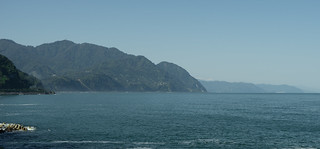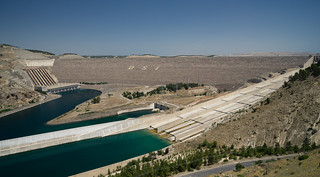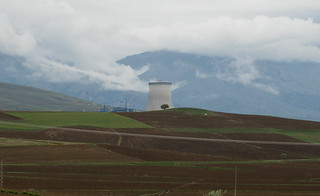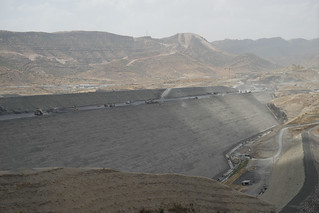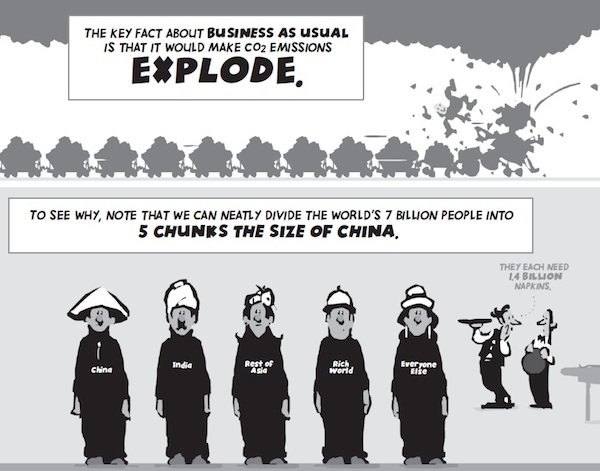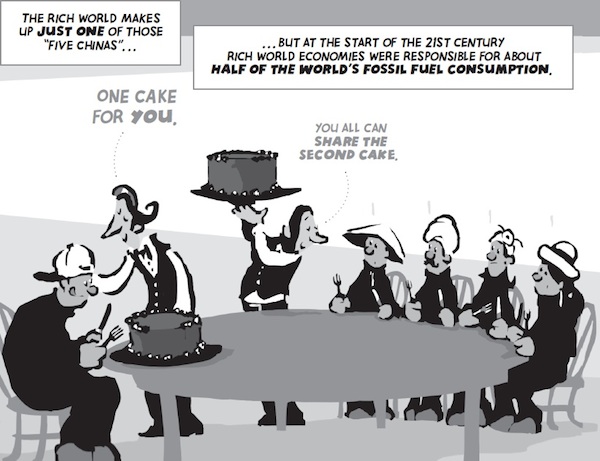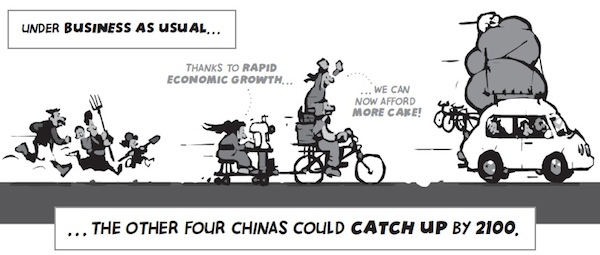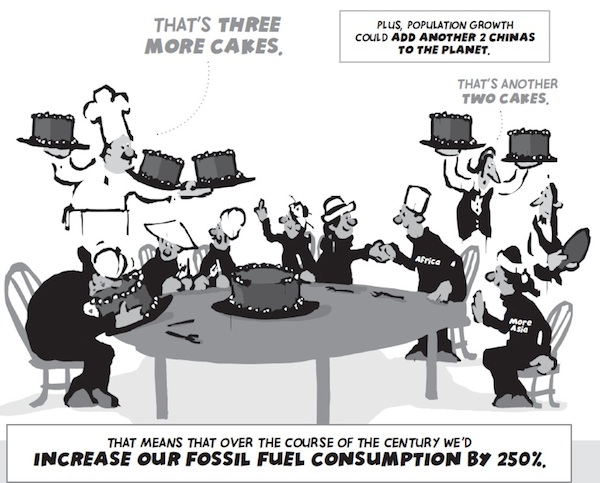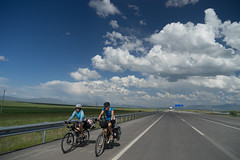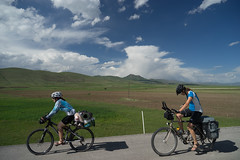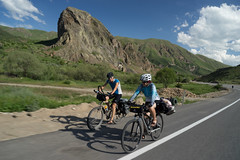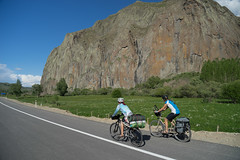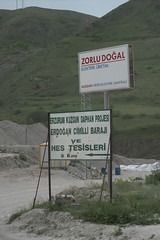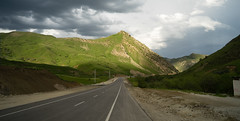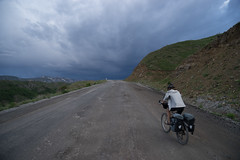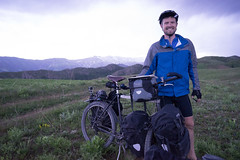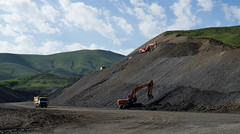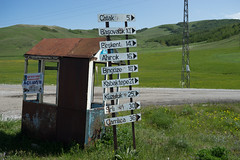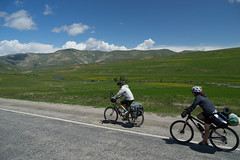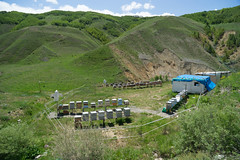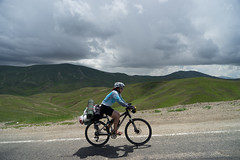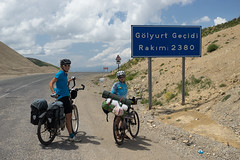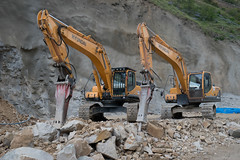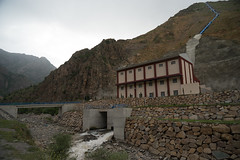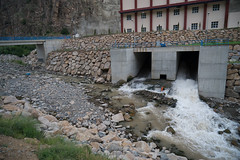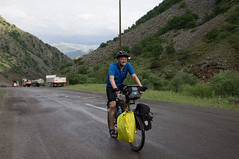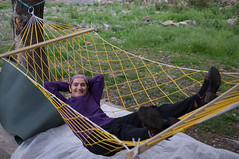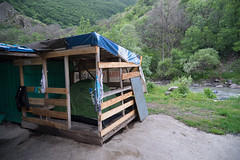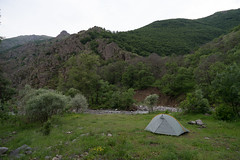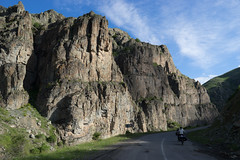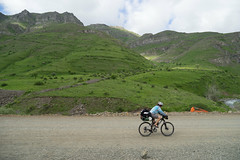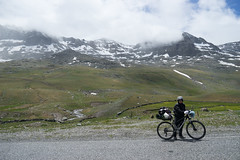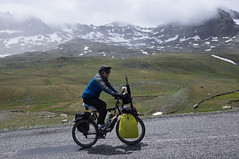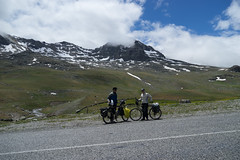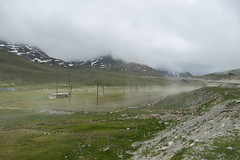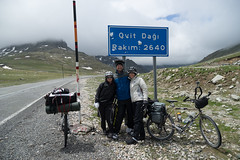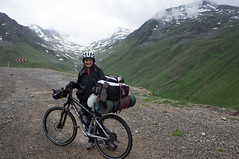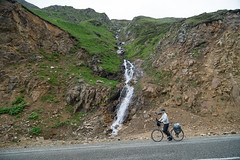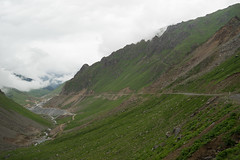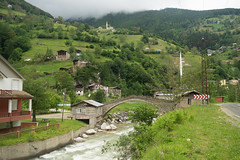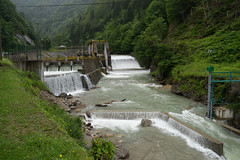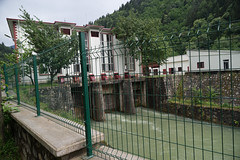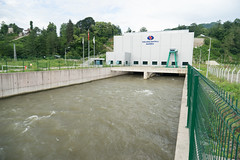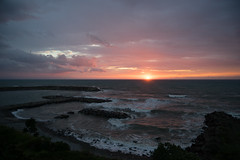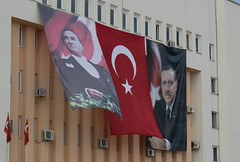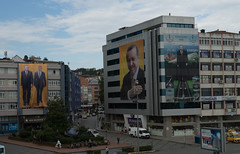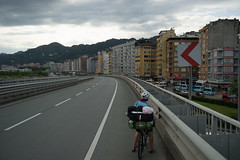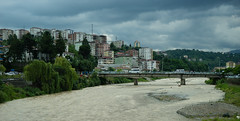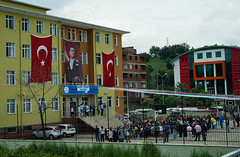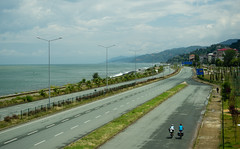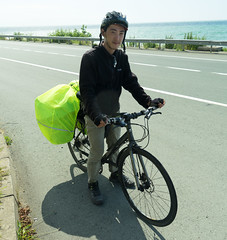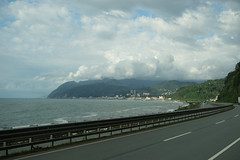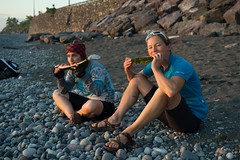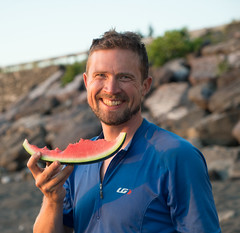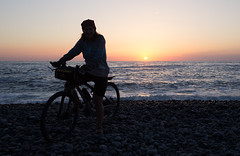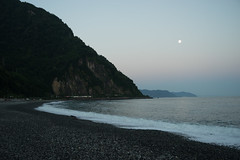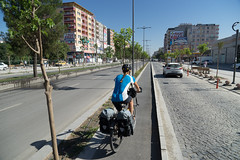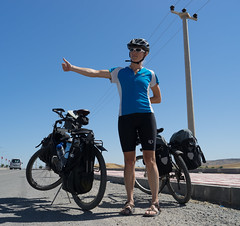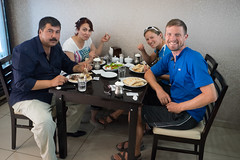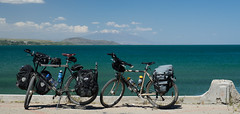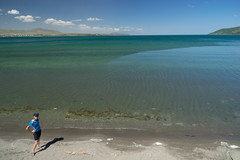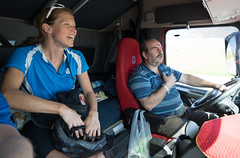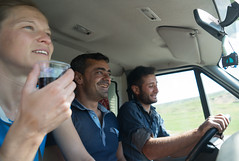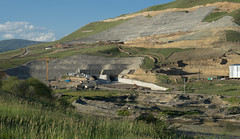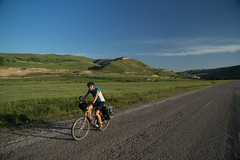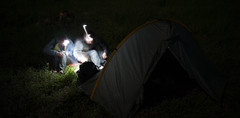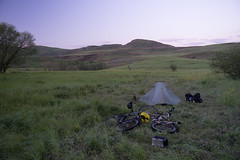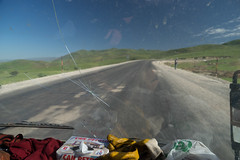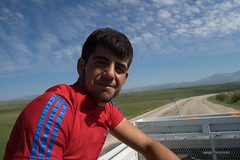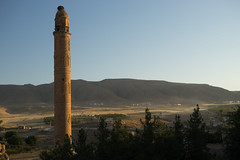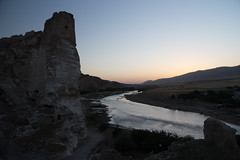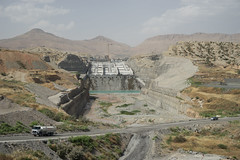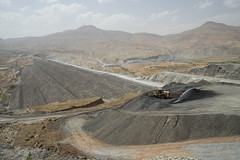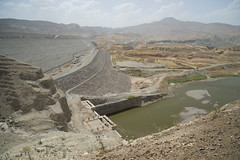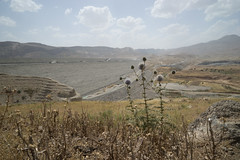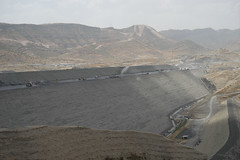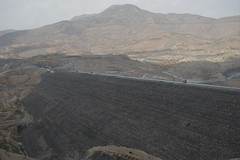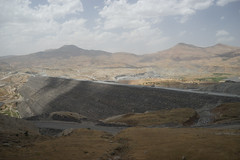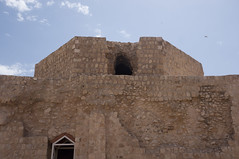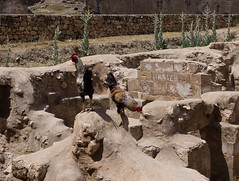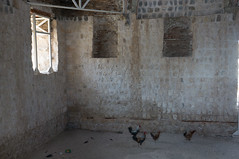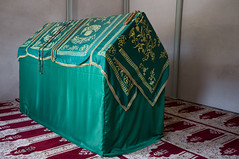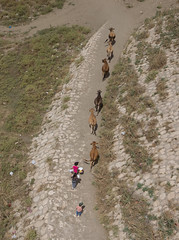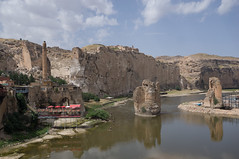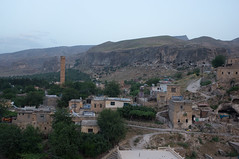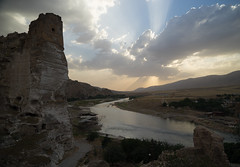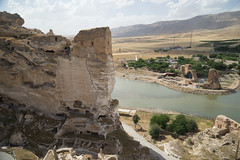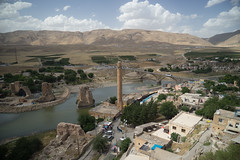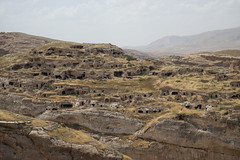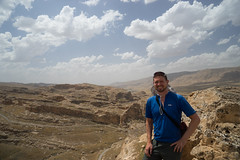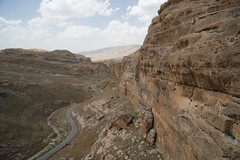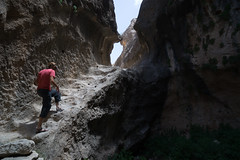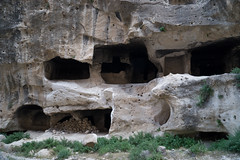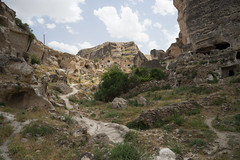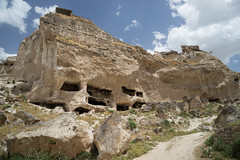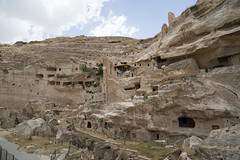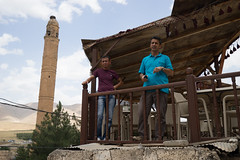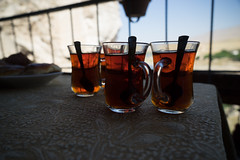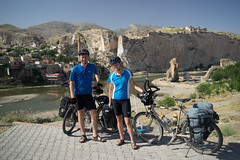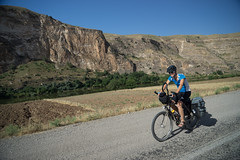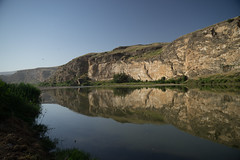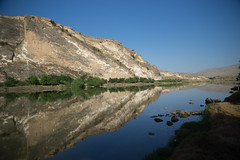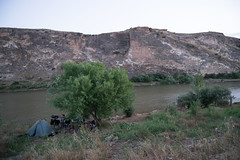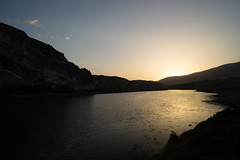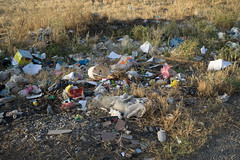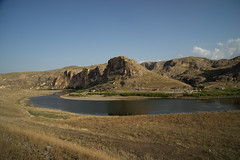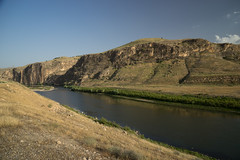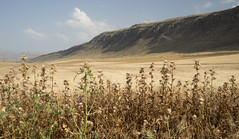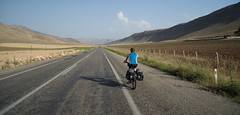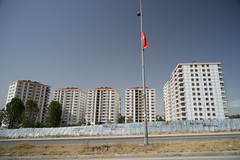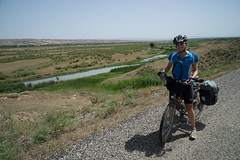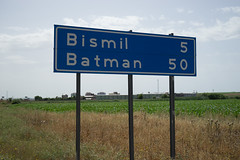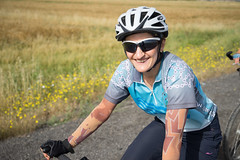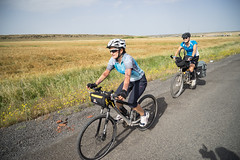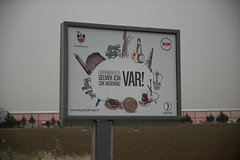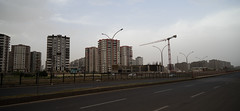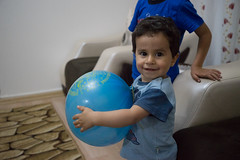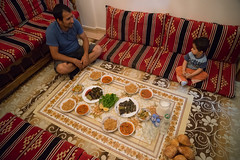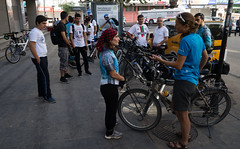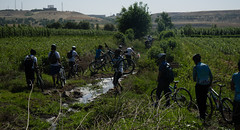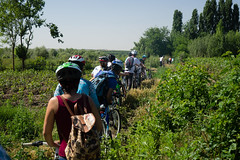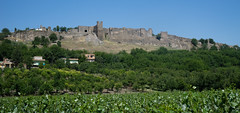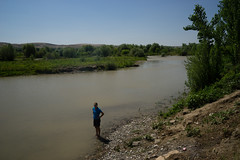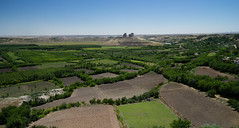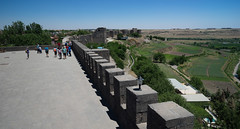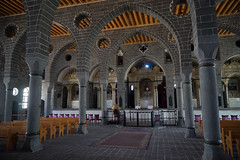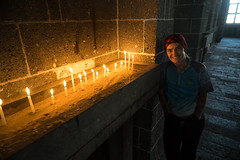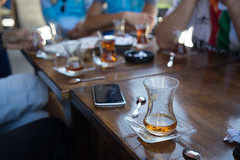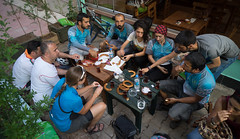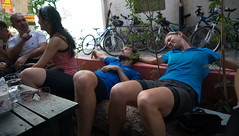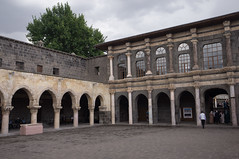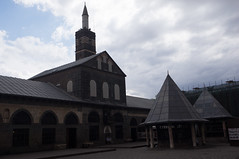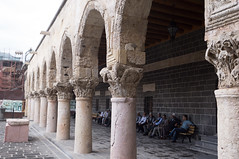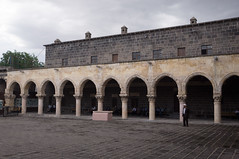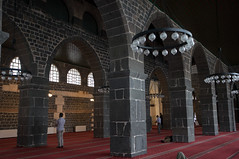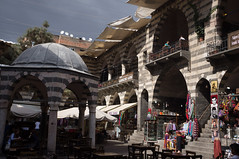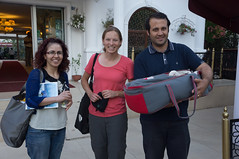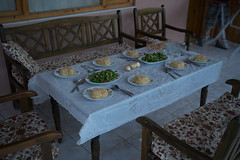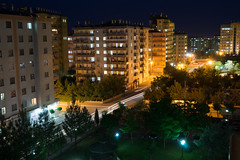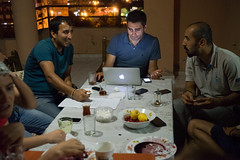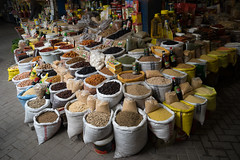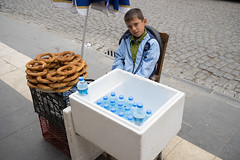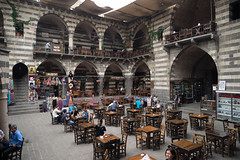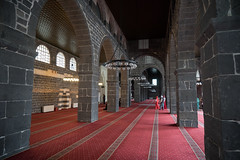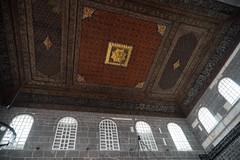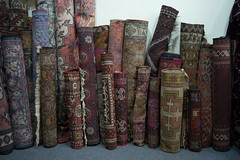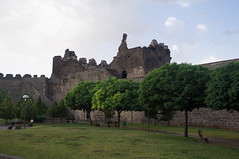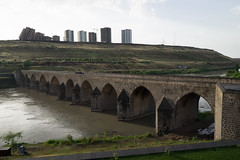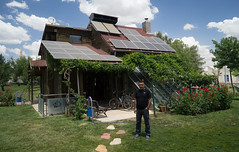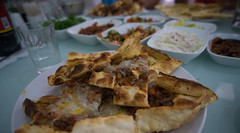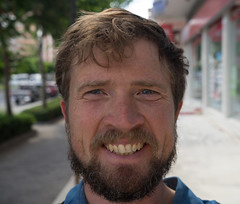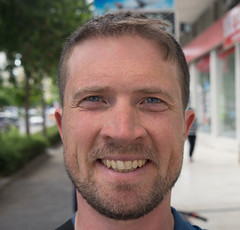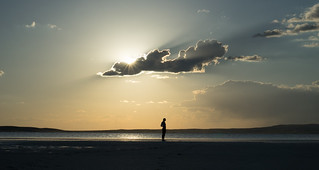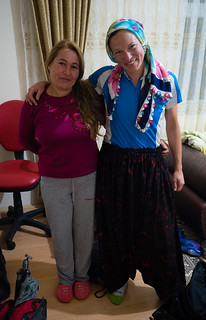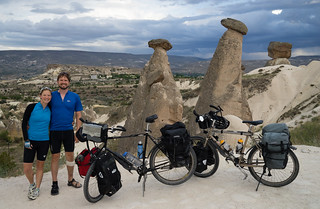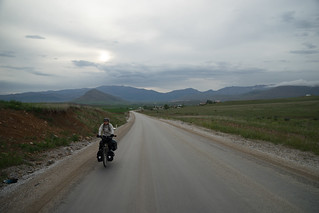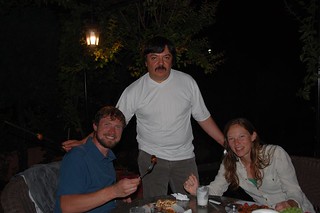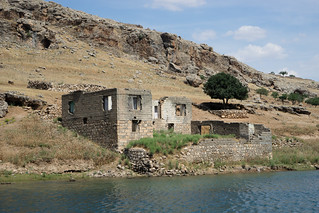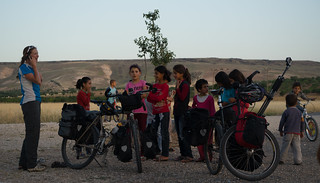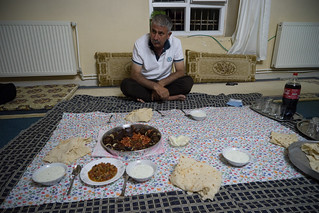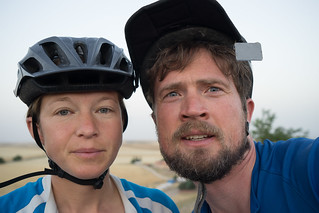Here are a few rough “episodes” from biking Turkey. I have put together videos for only the first part of the country — the rest of Turkey is covered in the summary video which will be available soon.
Archive for June, 2014
Videos from Turkey
Sunday, June 29th, 2014Get The Bicycle Diaries for FREE
Monday, June 23rd, 2014This Monday to Thursday, my book, The Bicycle Diaries, will be FREE to download to any Kindle device. Just go to Amazon and click to download.
This is a special limited promotion, designed to get this story into more hands. So, get the book in your hands, and tell your friends!
Reflections on Climate Change After Biking Across Turkey
Sunday, June 15th, 2014I’m writing this blog entry from Batumi, Georgia, sitting on a beach chair and gazing across the Black Sea. This morning we left Turkey and entered Georgia, where we quickly realized just how much Turkish we had learned in our six weeks in the country. In Turkish, we can count to a thousand, make basic conversation about the weather, ask someone how many children they have, and ask if we can set up a tent for the night (our grammar is horrible, but we could communicate). In Georgian, we only know how to say “thank you.” It’s much harder to talk to people.
I’m working on a video summary of Turkey, which will show the many highlights: campsites along lakes, rivers, and the Black Sea; families who have hosted us in the countryside and cities; countless stops for tea; the five-times-a-day call to prayer; witnessing the incredible pace of progress in a rapidly growing country — cranes everywhere, building new apartment complexes, new roads, and new power plants. Stay tuned.
With respect to climate change, below are our thoughts after crossing Turkey. These are the generalizations reached by biking across a country and talking with as many people as possible. It was reached by speaking with experts and advocates in Istanbul, Ankara, and Diyarbakir, and speaking with laypeople we met in the cities and countryside. It is not a scientific survey so much as a set of impressions.
1) Global warming is a low priority for Turkish civil society. We met few environmental advocates who focus exclusively on this issue — in fact, the main environmental movements in Turkey appear to be opposing new nuclear and hydropower plants, both of which are relatively good ideas if you care only about climate change.
2) Global warming is very low on the political agenda. When talking with experts and reading over the official plans for the next decade, I see that greenhouse gas emissions are not a significant priority. The main priorities for Turkey’s energy future are to increase energy supply and reduce the amount of energy the country imports. This is a mixed bag from a global warming perspective: it means both more coal and more hydropower and wind.
3) External international pressure matters. While in Istanbul, we learned that Turkey has renewable energy targets; that the main reason they have them is because they want to be part of the EU, and the EU requires countries to have such targets.
4) Decisions Turkey makes today will make a big difference to future emissions. What we saw in Turkey is a country that is rapidly building infrastructure — new roads, dams, and buildings. This infrastructure will be there for decades. One advocate shared with me a summary of all the proposed power plants — and then noted that not all will be built. Some won’t be funded or will prove impractical, and others will be stopped by local opposition. We heard from a second advocate that only about one in seven of the proposed hydropower plants in the country’s rainy northeast would be built, largely because of local resistance to them. With regards to energy, Turkey can build many more coal and natural gas plants, or build more non-carbon polluting sources.
Many advocates we met questioned whether Turkey even needs all of these new power plants. While there are many ways the country can become more efficient with its energy, and thus reduce current and future emissions compared to business as usual, this is actually a broader question over development, and whether we “need” so much energy and consumption to be a fulfilled, healthy, happy, prosperous society. Personally, I like to sidestep this question, as it seems inevitable that Turkey’s energy demand will grow (it currently uses about 1/5th as much energy per person as the U.S.), and rather than asking whether or not it should grow, I’m focused on how it will grow.
5) It is getting warmer in Turkey, and people are noticing. You can see a longer blog entry about this here, but we were surprised by how many people said they thought it was warmer than when they were a child — even when they didn’t know what global warming was.
6) We’re reminded why it is so hard to address climate change. In our conversations, it was apparent how intrinsically local environmentalism is — the biggest environmental movements in Turkey appear to be opposing specific new power plants by local communities. It’s hard to in turn think globally — what is best for a community or region (for example, building natural gas power plants instead of hydropower or nuclear) might not be what is best for the world (since fossil fuel power plants have higher greenhouse gas emissions). Also, we’re reminded how hard it is to work together. I usually think about how countries have to work together to solve this problem, but traveling through Kurdish Turkey, I’m reminded how much trouble countries have working together within their own borders. Lindsey writes more on this in her recent post from Kurdistan.
Again, this is a list of impressions from biking across the country and talking with people we met. If you disagree with any of these thoughts, or think we should be considering other issues as we bike, please let us know in the comments below.
After taking another day to recover and reflect here in Batumi, Georgia, we are going to take the next week to bike across this small former Soviet country — and ride north into the Great Caucasus mountains. Check back in a week for more stories and photos from the road.
Thoughts on Climate Change from Kurdistan
Sunday, June 15th, 2014In Diyarbakir, we were interviewed by a reporter for an online newspaper associated with Mezopotamya Ekoloji Hareketi, a group working with local municipalities to prevent ecological destruction in Kurdistan. When preparing for the interview, we thought about the questions we might be asked and wrote up some notes.
We figured we would be asked about the overall purpose of our trip, and we boiled it down to 3 major goals:
Also, we thought they’d ask what we have learned about climate change in Turkey. Our answer comes from 3 different sources:
The interview ended up being a bit different than we anticipated. The reporter first asked about what sort of ecological destruction we had seen in Turkey as we rode. This question got us thinking about the areas we had ridden through – mostly we’ve been going through small towns and the countryside where, with the exception of a day or two of forests and the ride along Lake Tuz, it’s been mostly farmland. Whether farming counts as ecological destruction depends on your perspective; one thing David has remarked on many times during this trip is the vastness of the human footprint. Biking through Mesopotamia, we can’t help but mull over human history and the ways the landscape around us has been altered, from megafauna extinctions, to the development of agriculture and permanent human settlements, to the many hydroelectric and irrigation dams built on the Euphrates and Tigris rivers.
We responded that we’d seen a lot of construction – new roads, dams, pipelines, power plants, buildings, transmission lines; but that we didn’t know what degree of destruction they had caused. We did go up the Euphrates – or rather, the Birecik Reservoir, where we saw several drowned villages, which certainly is destruction of a kind. We also visited the Ataturk Dam, which holds back a reservoir bigger than any in the U.S.; there’s no way a dam of that scale didn’t cause considerable ecological destruction.
The rest of the interview/conversation was mostly about dams and politics, two inseparable issues in Turkey. In fact, everything seems to come down to politics, especially in Kurdistan – the southeastern part of the country, where the population is largely Kurdish. While we observed a consistent displeasure across the country regarding government-backed hydropower and nuclear projects, it seems more personal in the southeast: people feel that the government has a policy of taking good things – power, water – from the east and transferring them to the west, leaving behind pollution and destroyed landscapes. We were asked what we thought people in this region should do to preserve their environment in the face of unfavorable governmental policies. It was a question we were not prepared to answer; there is a long history of oppression, violence, and distrust in this part of the country that as outsiders we can only get a glimpse of. We don’t have enough context and local knowledge to offer advice on whether and how to push back against a powerful central government on projects that are a core part of its program.
As we talked, we felt a tension similar to that we’ve been feeling all along on this trip: Turkey is installing more energy capacity – what form should it take? Dams are very unpopular – there are three planned on the Tigris near Diyarbakir alone, one of which would flood a large patch of farms and gardens where most of the produce for the city comes from. If they don’t build those dams, will they build coal or natural gas power plants instead? What local treasures might those destroy, in addition to creating greenhouse gas emissions that affect the whole world? Or could Turkey choose not to build new energy projects? Many environmentalists argue that they don’t improve anybody’s lives and that the energy isn’t necessary. (On the other hand, in the apartment where we are staying in Diyarbakir, the electricity has gone out several times a day – and Turkey’s energy consumption per capita is much lower than the average developed country.)
When we set off across Turkey, we hoped to answer some of these questions. Two thirds of our way across the country, we don’t feel much closer to the answers. Instead, we’ve become more acutely aware of why it is so hard for us to address climate change. For one, environmentalism is intrinsically local, and what is best for a community or region (for example, building natural gas power plants instead of hydropower or nuclear) might not be what is best for the world (since fossil fuel power plants have higher greenhouse gas emissions). Also, climate change is a problem that we all have to work together to solve. Getting the countries of the world to work together seems all the more daunting when you observe how people struggle to work together within national borders, as we’ve witnessed here in Kurdistan where people complain of an oppressive national government and Turkish fighter jets make flyovers several times a day, drowning out conversation.
If anything, this tension between the local and the global, and the personal nature of the anti-dam movements, highlights why we’re doing this trip: to personalize climate change. A dam under construction poised to drown a village that has been inhabited for over 10,000 years (such as Ilisu Dam, which will flood Hasankeyf) is immediate, dramatic, and personal. Right now, it’s hard to show that any particular event – hurricanes in the Philippines, droughts in Turkey or California – is due to climate change, but the science suggests that these kinds of destructive events are likely to become more frequent and intense as the planet warms. In order to inspire action with the same passion we see in the anti-dam movements here, we need to understand how climate change – an abstract, slow-moving, global phenomenon – could ultimately be as locally damaging as a nuclear power plant or dam – perhaps even more so. As we mentioned in our interview, it is our hope that the stories we share will help demonstrate this and move people just a little closer to action.
Five Chinas & The Cartoon Guide to Climate Change
Sunday, June 15th, 2014In the past six weeks, Lindsey and I have biked across Turkey, talking to people about climate change. While a summary of our impressions can be found in this blog post, what struck us the most is how much new infrastructure — and especially power plants — Turkey is building. In fact, in the next decade, the country plans to almost double its electrical generating capacity.
I’ve been looking for good ways to explain why this is a problem. Turkey’s per capita emissions are about one quarter of the U.S.’s, comparable with China’s per capita emissions. Turkey makes up only one percent of the global population, and emits only about one percent of human-produced greenhouse gases — why should it matter if they dramatically increase their emissions?
A great explanation can be found below, courtesy of The Cartoon Introduction to Climate Change, a new book by Grady Klein and “Stand Up Economist” Yoram Bauman. It sums up why “business as usual” is a major problem. If Turkey, and all of the other countries with similar per capita emissions, “catch up” with the developed world using energy from fossil fuels, emissions – and global warming – will spiral out of control.
Northeast Turkey: Photos
Sunday, June 15th, 2014After our last ‘driver’ dropped us off in Erzurum, we met up with Cilem (who had waited patiently for over 6 hours since her bus arrived) and started biking towards the coast. There was a lot of up and down, notably climbing up the pass on Ovit Dagi and reaching our highest elevation yet – 2640m! It was cold up there, but beautiful, and we were rewarded with a descent all the way to sea level. On the way up, we noticed many beekeepers – the region is famous for its honey – and the way down was through a river valley with steep slopes covered in tea plantations (now we’ve seen where the endless Turkish tea comes from!), with small villages impossibly high up – we can’t figure out how people get to and from their houses. We saw tons of construction – they are widening the road and blasting tunnels through the mountains. Cyclists riding this route next year may have the choice of a 14km tunnel instead of going over the pass (choose the climb!). We also saw many run-of-the-river hydroelectric stations (HES). When we reached the Black Sea, we met one of our first cycle tourists – from Kazakhstan! – and we also saw a lot of propaganda in preparation for an upcoming visit from the prime minister, Erdogan. One of the highlights of this part of the trip was our campsites. We stayed at the top of one of the first passes, with fantastic views; the next night, we came across a small hut by the river; as we were scoping it as a potential campsite, the owner drove by – thanks to Cilem, we were able to understand that it was his place and that we were welcome to pitch our tents outside for the night. Later that night, his friends stopped by – after they overcame their surprise at our presence, we shared some snacks and conversation. We also spent one night in a tea warehouse when a local shopkeeper warned that a storm was coming in, and on our last night in Turkey we camped right next to the Black Sea on a gorgeous, cloudless night.
Hitchbiking from Hasankeyf to Erzurum: Photos
Sunday, June 15th, 2014We had planned to ride northeast from Hasankeyf before crossing into Georgia near the Armenian border. However, we decided we wanted to see the Black Sea and spend more time in Georgia, including a visit to the Great Caucasus mountains in the north. Cilem, from Diyarbakir, had some time off and was interested in the Black Sea as well. So we arranged to meet her in Erzurum, 440km from Hasankeyf (and over 1000m higher). In order to still make it to Central Asia in line with our visa dates, we needed to travel quickly, so we decided to hitchbike. We managed to cover the distance in just under 30 hours, stringing together 11 rides in everything from a public dolmus (minibus) where they threw our bikes on top, to trucks small and large, to a small SUV where the owners struggled for 15 minutes to fold the seats down so everything could fit, despite us repeatedly saying that it was OK and we could find another ride – they ended up taking us all the way to Lake Van and buying us lunch. The trip involved learning more Kurdish, an abbreviated conversation about Allah, a nice campsite in a field outside of a small village, a bit of biking – including a stretch along a beautiful valley where we suddenly came upon yet another dam under construction – and so much generosity and kindness. People would not only stop to give us rides, but climb up into truck beds to heave our bikes and panniers up, offer us food and drink, and wish us a safe journey when we parted ways. It may have been less efficient than taking a bus, but it was so much more rewarding, allowing us to meet more people and see more of the country.
Hasankeyf and Ilisu Dam: Photos
Sunday, June 15th, 2014Cilem, our host in Diyarbakir, joined us for the first part of our ride to Hasankeyf, which went through a town named Batman. Later we got our first glimpse of the Tigris River valley – the river has cut an impressive canyon, creating high cliffs on one side. We camped a few kilometers before Hasankeyf at a small campground on the river. The man who runs the campground explained how hard he’d worked to create the site, which will all be flooded in a couple of years by the Ilisu Dam. The dam isn’t bad, though, he said – the government just wasn’t offering enough for his property. Once in Hasankeyf, we heard this sentiment again, though many people are opposed to the dam, period. It will flood about 10 villages, including the ancient town of Hasankeyf, which was first settled over 10,000 years ago and is still inhabited today. We wandered around the ancient ruins and up one of the valleys behind the town, where we got a gorgeous view. The next day, I wasn’t feeling great so David hitchbiked alone to the Ilisu Dam, about 70km downstream. 3,000 people are working around the clock to complete the dam in the next 6 months, after which the reservoir will start to fill. People expect it to take about two years to reach Hasankeyf, after which only the top two meters of the minaret will be above water.
Diyarbakir: Photos
Sunday, June 15th, 2014Upon our arrival to Diyarbakir, we were treated to a delicious dinner at the home of one of the bike club members. Little did we know, the group had decided to take turns hosting us and each other every night we were in town. We ate very well! They also took us on a ride around the old city, where we had breakfast on the banks of the Tigris River, saw the huge city walls, and the 10-eyed bridge, where a dam is planned that would flood some of the area around the city. We met with an environmental group that fights dams and other ecological destruction and were interviewed for their online newspaper. We also did a bit of tourism, buying our first carpet in Turkey, and spent half a day streamlining our gear – we sent a few items home, and all of our warm clothing and 1 sleeping bag ahead to Dushanbe.
Ankara to Diyarbakir – 670 Miles, 15 Days
Thursday, June 5th, 2014After 10 days in Ankara, we set out in the afternoon towards Cappadocia. We decided to take a less direct route so we could see Tüz Gölü, a large salt lake. It took quite awhile to get out of Ankara, following a busy highway uphill through the outskirts of the sprawling city. We made it to a more rural area and camped off the road in a field. The next day the lake came into view, and we followed its shoreline for most of the afternoon. The lake – the 2nd largest in Turkey – is what remains of a huge lake from the last ice age; around its shore for as far as we could see, people were growing wheat in the perfectly flat former lakebed. This landscape made for very fast biking, and we enjoyed traveling a great distance without too much effort. That night, we made it our goal to camp along the shoreline – this turned out to be a bit challenging, as we had to push our bikes through fields for quite a ways, but it was totally worth it – we set up our tent and made dinner as the sun set over the lake, and we waded out into the salty flats and enjoyed a bit of wine – our first sip since Istanbul.
The following day we left the lake, biked across the old lakebed, then climbed up towards Cappadocia. We made our first friends on the road that night when a shepherd saw us setting up camp outside of his village and, along with his wife, insisted that we stay at their house. It was wonderful to finally meet people on our route and get a bit more perspective on where we were biking through. They helped us dismantle our tent and pack everything up, led us to their house in the dark, and fed us a 2nd dinner despite our insistence that we had already eaten. Sakine and her husband Çemali were very adept at communicating with foreigners – through gestures, a dictionary on our phone, and our rudimentary Turkish, we discussed their families, jobs (Sakine helps out at the local school, and Çemali is a shepherd for Sakine’s parents’ sheep). We learned that they are our age, their sons are 12 and 8, and that they make their own yogurt, cheese, and butter, and sell the wool from their sheep. The next morning, we visited the school and even talked about climate change. Sakine said that it was warmer and drier than it used to be, and that this year in particular it was hard to grow crops because of the lack of rain. Despite the language barrier, I felt a real warmth and friendship with Sakine and it was kind of hard to say goodbye. But, Cappadocia was calling.
We arrived in Uçhisar in the late afternoon and got our first glimpse of the gnarly Cappadocian landscape. We had been planning to stay with a warmshowers host, but communication had been difficult – we weren’t sure if he was actually home or where his house was – and when we descended into Goreme, we decided to get a hotel, relax, and be tourists for a day or so. It’s a bizarre place, and also the most touristy experience since Istanbul. We visited the open air museum of old cathedrals carved into the rock, wandered through the valley full of fairy chimneys – crazy pillars of rock sculpted by water and wind, with small houses carved into them – visited an underground city, did some housekeeping, and left late on our 2nd day. We camped by a nice stream tucked behind some fields after we left town, then continued on our way.
We’d decided to take the less obvious route to Gaziantep, on small roads through the mountains. Two different people told us it was impossible because it’s so steep, so naturally we were pretty pumped about our decision. We camped in the rain and left before sunrise the next morning – biking through farmland in the early morning mist left by the rain was beautiful, if a bit eerie. This turned into the day of tea. We stopped for breakfast near a house – and were invited for tea. We climbed 2,000 feet over 10 miles (this was the ‘impossible’ part, we figured), and at the highest pass of the day shared some tea with a road construction crew. We managed to duck into a gas station before the skies broke open that afternoon, and accepted several glasses of tea from the men working there. When the rain stopped, we wound our way through several small villages, dodging muddy cows coming in from the pasture. After passing through a small town with no market (we did our shopping at a gas station market where everything was well past its sell-by date), we saw a new power plant in the distance, and several busloads of workers coming home from the plant passed us as we pedaled by.
We spent another night camped in a pasture, then got another early start; we had about 200km left until Gaziantep and we hoped to make it in 2 days. However, it was another long day of climbing with more rain, and shortly before sunset we realized we weren’t going to make it as far as we wanted. We got groceries in a small village, then asked around for places to camp. The first few people we asked told us we’d find something in 10 or 20 km, but when we rolled up to a house, before we could even say ‘çadir, camping, nerede?’ (tent, camping, where?), they beckoned us inside making eating motions – it almost felt like they were scolding us for being late to dinner. We asked about camping and they motioned to their yard, so we happily accepted their hospitality. After a long day of riding, facing the task of searching for a campsite and making pasta over a camp stove, it was magical to walk inside and find a tablecloth on the floor covered with dishes of eggplant, tomato, and goat stew, yogurt and cucumber salad, and lavash (flatbread). It wasn’t until we had stuffed ourselves that we realized I was the only woman in the room. Our hosts were a family with the grandparents, their son, his wife, and their children; the grandfather and father were joined by several of their (male) friends, and the grandmother and mother drifted in and out to clear dishes and bring tea, but they didn’t sit with us. I spoke with them a bit, but they mostly stayed in the kitchen. It felt a bit odd, and their modest attire (long skirts, long sleeves, scarves covering their heads and necks) made me glad I was wearing my bike leggings and not just shorts. We had a lively conversation with the father and grandfather, asking them about climate change using Google Translate. Like Sakine and Çemali, they too had noticed that it rained less and was hotter. Another interesting moment was when they pointed to the light and said “Atatürk,” indicating that the electricity came from Atatürk Dam. The next morning, the women made another delicious meal (which we ate with the grandfather), and then we were on our way around 5:00, with a goal of making it the last 120km to Gaziantep.
We made it, but we weren’t in the best shape – we had a long rest at a gas station during a torrential rainstorm, but no sooner had we left than the sky split open again. We ended up riding through a nearly-flooded road, then through pounding rain, and then suddenly it stopped and the road was bone-dry. I was falling apart – I don’t think I’d eaten enough – and we had to stop and eat what was left of our food along the freeway. Fortunately it had a wide shoulder and very little traffic – it was actually excellent for riding – and after a snack we pounded out the rest of the distance. Our warmshowers hosts surprised us about 5km from their house, took our panniers in their car, and, when we arrived at their suburban enclave – the only suburbs we’ve seen in Turkey – hustled us to the shower and then to their outside dining area where we ate massive amounts of kebab, bread, and salad.
They were such a nice family and fed us extremely well. We went into town the next day and visited the Zeugma museum, which houses mosaics from a town flooded by the Birecik Dam in 2000. The museum was very well-done and the mosaics were stunning. When we left Gaziantep, we biked to the town of Birecik, which sits on both sides of the Euphrates River downstream of the Birecik and Atatürk Dams. We were strangely excited to cross the Euphrates, and we spent some time biking along the shore. The next day we rode to Old Halfeti, or what is left of it after the reservoir flooded it. We also biked through New Halfeti, a comparatively bland town where residents were relocated. We were gripped by the sudden desire to take a boat as far up the river as we could (rather than bike out of the river canyon in the mid-day heat). Several people told us it was impossible, and that there were no roads upstream that came close enough to the river, but we eventually found somebody who knew the area well, and he agreed to take us up the reservoir as far as he could.
It turned out to be a wonderful afternoon. The water was clear (since all the sediment is trapped behind the dams), and we went up through the canyon, which had steep walls on either side, some of which had ancient cave houses carved into them. Immediately around Halfeti there was other traffic on the reservoir – tourists come to visit the partially submerged Rumkale (castle) – but once we passed that, and the adjacent flooded mosque, we saw virtually nobody for several hours. After awhile, our captain – who spoke no English – pointed to a flooded village on the east bank of the river. “Evim” he said – “My house.” His family had lived in the village until it was flooded by the dam, along with about 10-15 other villages, displacing about 10,000 people. He brought us to a couple of swimming holes – including one with steps carved into the rock that he said were 3,000-4,000 years old – and we tried to imagine what it would be like to have your whole town flooded, to go from being a fisherman on the Euphrates River, to taking tourists around the reservoir that swallowed your home.
We camped on a tributary to the river that night after being dropped off at the foot of a steep gravel road and biking through fields buzzing with combines harvesting wheat. The next morning, we had tea with the operators of a small dam on the tributary – it was built just 4 years ago, and they said that this year energy production was 25% of normal due to the drought. Later that morning, after more miles on dirt roads than we would have liked, we made it to Atatürk Dam. As promised, it is massive. Its capacity is over 10 gigawatts, which is one sixth of Turkey’s total installed electrical capacity. The turquoise reservoir stretches out for miles behind it, and we visited the friendly town of Bozova along its shore. We realized that we were squarely in Kurdistan – or the Kurdish part of Turkey – when people started correcting our rudimentary Turkish, replacing it with Kurdish words. Something had changed, though we can’t quite put our finger on it. People seemed happier, more gregarious, and they huddled around us, curious and smiling. When we asked for directions, people hopped in their cars and had us follow them, and we were invited to yet more tea on our reluctant way out of town.
It was extremely hot that day, and awhile before sunset we needed to stop in a village to ask for water. We still wanted to go farther, but when they invited us for tea… and then dinner… and then to spend the night, we gladly accepted. We spent that night with a lovely family that grows wheat and had goats, sheep, and ducks in the yard. They called a relative in town who spoke English (a common practice, we’re seeing), who confirmed that we were invited to stay, that the family was interested in us, and that we were very welcome there. Dinner was, as usual, delicious, and we had more fun with Google Translate and also learned some more Kurdish. Just like everybody else, they said it was warmer and drier. Interestingly, despite just being 2 km from the Atatürk Reservoir, they don’t get water from it and their crops are rain fed. We couldn’t communicate well enough to figure out why. We had asked about camping, but they insisted we stay inside on two mattresses set up on beautiful carpets in a room that was otherwise empty except for a TV and Quran. We wanted to get an early start since we still had 140km to Diyarbakir, so we got up with the father at 4:30 when he woke up to pray. It was a ridiculous day, with a long, deceptive climb that looked flat but was decidedly not, and a crazy wind storm whipping up from the desert in Syria. We were exhausted when we arrived, 15 hours later, but we had made it to our goal of Diyarbakir, an ancient city on the banks of the Tigris River.







